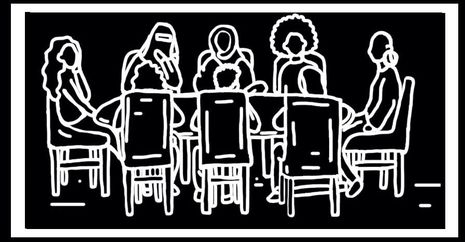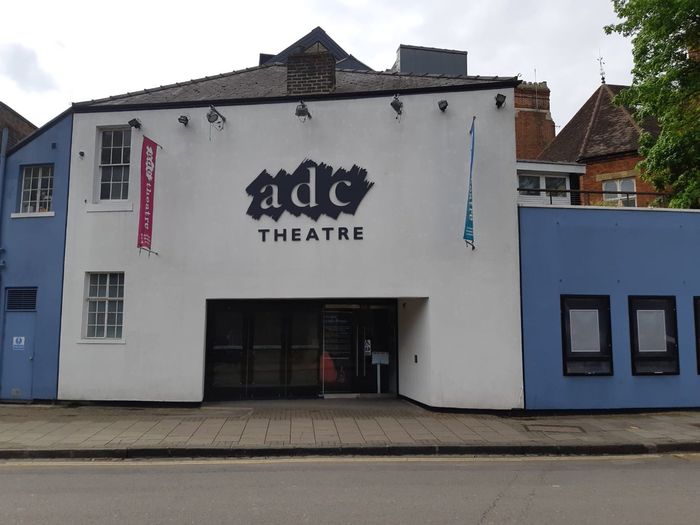The Trouble With Today’s Women has a potent political message but lacks cohesion
Jasmine Regan Feldman reviews the experimental ADC lateshow, The Trouble With Today’s Women

The Trouble with Today’s Women is a political collaboration intended to present a diverse cast of voices to explore the contemporary issues faced by women of colour. The show was a part of the ADC’s late-night series, and the audience that assembled was far more sober, literally, than for the other late-night timeslots as The Trouble with Today’s Women was a serious discussion of poignant issues that likely resonated with many members of the audience. Although there was the occasional joke, even the humour was tinged with pain as the women jabbed at patriarchy, sexual violence, and liberation.
“Each woman had her turn to mourn her difficulties or rejoice in her newly found liberations”
Since the writing was done in collaboration in ‘different geographical locations’, a variety of voices could be heard in the story of each character. The Trouble with Today’s Women was formatted so that there was no main character who took centre stage; instead, each woman had her turn to mourn her difficulties or rejoice in her newly found liberations. The women were openly able to present their own perspectives, and the format allowed them to debate each other.
However, while this writing style was beneficial in the political discussions, it left the story somewhat muddled. The Trouble with Today’s Women lacked a through-line that would have separated a play from rhetorical prose thrown at the audience. I think this resulted from the multiple writers who each presented a fascinating and unique perspective, but they had not entirely tied each story together. Consequently, the play did not feel particularly grounded in time or space, which is essential when discussing modern political problems. While it was established from the beginning that The Trouble with Today’s Women is set just after a Cambridge formal, assumably in a fellow’s room, very little is mentioned about this is setting again and how these women came to be here, nor is their relationship to each other discussed in detail. The fact that the play was set in Cambridge very quickly seemed to become irrelevant as the women tended to discuss their issues within a cultural context or as a more general experience as British women of colour. I think this led to some confusion as to which lens the writers were examining their issues presented, which weakened the story but did not sacrifice the play’s emotion.
The cast did a fantastic job of representing and presenting each of the writer’s unique voices. Every role was their own well-defined person, characterised not just in speech but also in their mannerisms and dress. Since the diversity of voices was central to The Trouble with Today’s Women, the actors delivered this theme perfectly; each was equally as engaging, enriched by the different attitudes and temperaments of the women.
“Interesting throughout, centring voices so frequently ignored in theatre”
The set and lighting design worked well to deliver the themes of the play. The stage was busy with furniture and props, most prominent, a framed painting of Winston Churchill, whose stern gaze watched over the women’s laments. Churchill’s stare in the context of The Trouble with Today’s Women transcends its original intent, representing the oppression of the patriarchy, the omnipresent male gaze, as well as signifying Britain’s horrific acts against women of colour, that Churchill contributed to and has become a symbol of. Churchill’s painting fell at a tense moment, possibly unscripted, based on the cast and audience’s reaction. All eyes were on the painting as it clattered to the floor. However, once Churchill was relegated to the floor, he was promptly ignored for the rest of the play, symbolising the women’s disregard of the male gaze, which they wished they break away from.
Overall, the themes and individual stories of The Trouble with Today’s Women were exceptionally well portrayed by the cast and set. Although it was very short, the play tackled some problematic subject matter head on and remained interesting throughout, platforming voices so frequently ignored in theatre. However, The Trouble with Today’s Women felt disjointed at times, meaning the discussion often lacked a layer of depth and nuance that would have left more of an effect on the audience. Leaving the theatre, I felt as though I had not really engaged with a story; rather, we had been talked at about society for 45 minutes, which has an impact on the audience but lacks the power that should have struck me long after curtains closed.
 News / SU reluctantly registers controversial women’s soc18 December 2025
News / SU reluctantly registers controversial women’s soc18 December 2025 News / CUP announces funding scheme for under-represented academics19 December 2025
News / CUP announces funding scheme for under-represented academics19 December 2025 Features / Should I stay or should I go? Cambridge students and alumni reflect on how their memories stay with them15 December 2025
Features / Should I stay or should I go? Cambridge students and alumni reflect on how their memories stay with them15 December 2025 Fashion / The art of the formal outfit 18 December 2025
Fashion / The art of the formal outfit 18 December 2025 News / Dons warn PM about Vet School closure16 December 2025
News / Dons warn PM about Vet School closure16 December 2025









